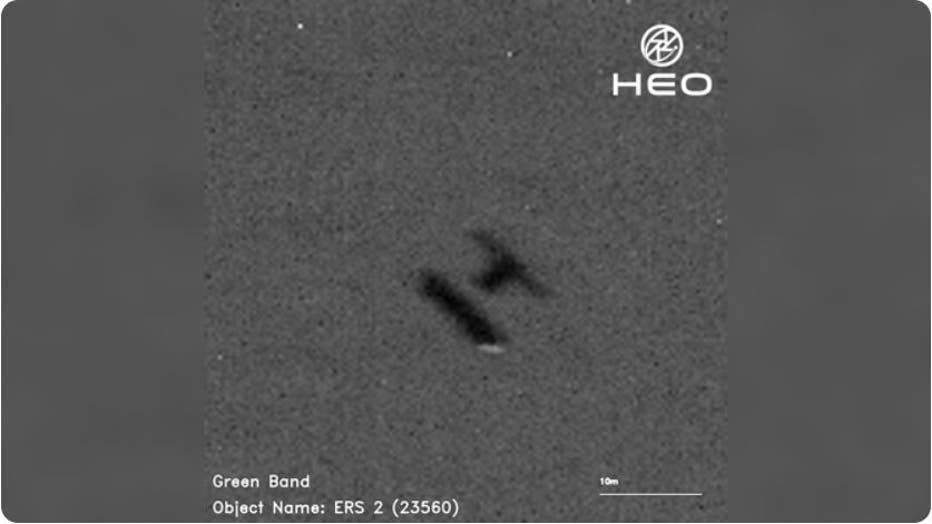School bus-sized satellite fell to Earth somewhere over North Pacific Ocean
The Along Track Scanning Radiometer on ERS provided the capability to accurately track sea-surface temperature. (Image: ESA)
A defunct European Space Agency satellite the size of a school bus came crashing down to Earth on Wednesday over the North Pacific Ocean, more than a decade after the spacecraft finished its mission observing Earth's systems and natural disasters.
Hours after the re-entry window had closed, ESA operations officials confirmed the satellite had completed its crash course with Earth over the North Pacific Ocean between Alaska and Hawaii at 12:17 p.m. EST.
"At approximately 18:17 CET (17:17 UTC) on Wednesday, 21 February 2024, ESA’s ERS-2 satellite completed its atmospheric reentry over the North Pacific Ocean. No damage to property has been reported," ESA wrote.
The European Space Agency’s first advanced Earth-observing satellite, known as the ERS-2, launched on April 21, 1995, and studied our planet’s land, oceans and polar caps for 16 years.
But in 2001, the ESA opted to end its operation and de-orbit the satellite to prevent the creation of more space debris.
Weather satellite captures stunning Earth
This animation was created by using one day’s worth of data from Europe’s Meteosat Third Generation Imager-1 (MTG-I1) between March 18-19, 2023. Images of the full Earth disc are produced by MTG-I1 every 10 minutes. Credit: EUMETSAT/ESA
NASA, ESA and other international aerospace community members have guidelines to reduce dead satellite and rocket parts in low-Earth orbit by requiring post-mission disposal of natural decay or a controlled entry.
"Most people nowadays and for the past several years have designed their satellites responsibly to be disposed of, responsibly and in a controlled manner," former NASA astronaut Leroy Chiao told FOX Weather. "At the end of life, spacecraft may do a de-orbit burn to try to target what we call the spacecraft or satellite graveyard in the Indian Ocean, far away from shipping lanes, far away from any human activity."
When will the ERS-2 satellite fall to Earth?

FILE - True colour satellite image of the Earth showing Asia, half in shadow, and the sun. (Photo by Planet Observer/Universal Images Group via Getty Images)
Over the past nearly 13 years, the ERS-2 satellite has naturally descended from its orbit about 350 miles above Earth until our planet's gravity pulls the spacecraft down and burns up in the atmosphere, according to FOX Weather.
Since the spacecraft took a "natural descent" path, ESA could not predict precisely when or where the satellite would come down on Earth – but first estimated it would happen in February 2024.

The ERS-2 satellite re-entry timeline. (Image: ESA)
ESA's Space Debris Office predicted the satellite would likely burn up over Earth's atmosphere around 10:41 a.m. ET, plus or minus a margin of about 1.44 hours.

ESA’s ERS-2 satellite was spotted on January 29, 2024, tumbling as it descends through the atmosphere. These images were captured by cameras on board other satellites by Australian company HEO on behalf of the UK Space Agency. (Credit: ESA/HEO via St
ESA said that at about 50 miles above Earth, the large satellite will break up into small pieces. Any risks from satellite reentry are very low, according to the space agency.
"It's expected that it will either all burn up, or maybe a few small pieces might survive the reentry into the Earth's atmosphere. But it's really not a cause for concern," Chiao told FOX Weather. "The calculated odds by the European Space Agency is about one and 1.5 billion, that some individual would be affected by this."
FOX Weather contributed to this report. It was reported from Cincinnati.

